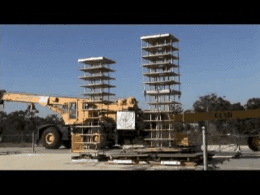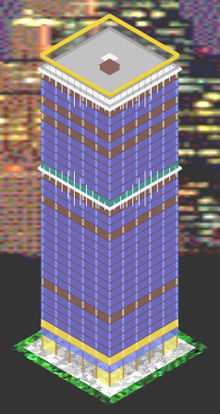Vibration control
| |
Educational level: this is a research resource. |
Vibration control in earthquake engineering is a set of technical means aimed to mitigate seismic impacts in building and non-building structures for enhancing their seismic fitness. All seismic vibration control devices may be classified as passive, active or hybrid where:
- passive control devices have no feedback capability between them, structural elements and the ground;
- active control devices incorporate real-time recoding instrumentation on the ground integrated with earthquake input processing equipment and actuators within the structure;
- hybrid control devices have combined features of active and passive control systems.
When ground seismic waves reach up and start to penetrate a base of a building, their energy flow density, due to reflections, reduces dramatically: usually, up to 90%. However, the remaining portions of the incident waves during a major earthquake still bear a huge devastating potential.
Ways of control
After the seismic waves enter a superstructure, there is a number of ways to control them in order to sooth their damaging effect and improve the building's seismic performance, for instance:
- to dissipate the wave energy inside a superstructure with properly engineered seismic dampers ;
- to reflect, diffract, and dissipate seismic waves in a process of their vertical propagation with the help of elevated building foundation ;
- to absorb the resonant portions of the whole wave frequencies band with the help of so called tuned mass dampers .

Devices of the last kind, abbreviated correspondingly as TMD for the tuned (passive), as AMD for the active, and as HMD for the hybrid mass dampers, have been studied and installed in high-rise buildings, predominantly in Japan, for a quarter of a century .

| |
Wikibooks has a book on the topic of Seismic fitness. |
To increase the shielded range of forcing frequencies, the concept of Multi-Frequency Quieting Building System (MFQBS) was developed .
However, there is quite another approach: partial suppression of the seismic energy flow into the superstructure known as seismic or base isolation.
For this, some pads are inserted into or under all major load-carrying elements in the base of the building which should substantially decouple a superstructure from its substructure resting on a shaking ground.
| |
Look up Vibration control in Wiktionary, the free dictionary. |
The first evidence of earthquake protection by using the principle of base isolation was discovered in Pasargadae, a city in ancient Persia, now Iran: it goes back to VI century BC .
See also
| |||||||
